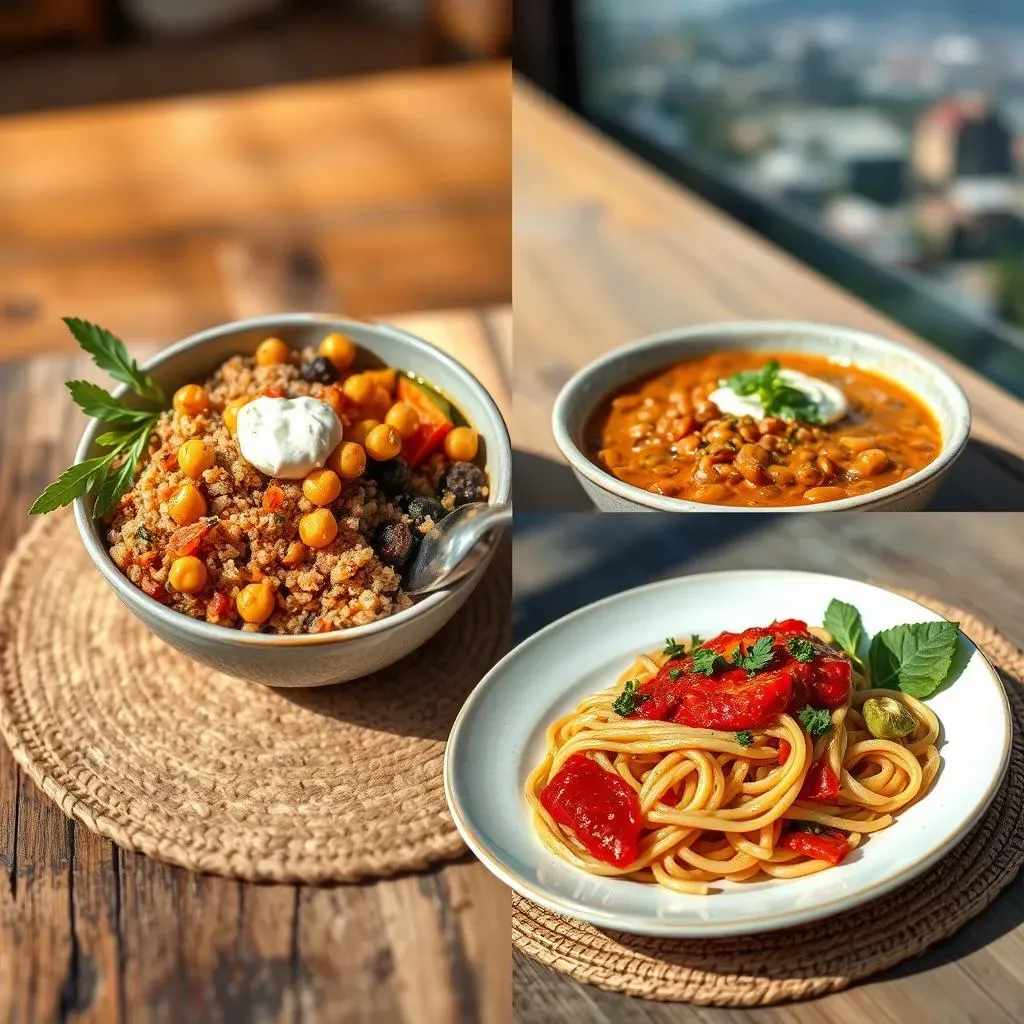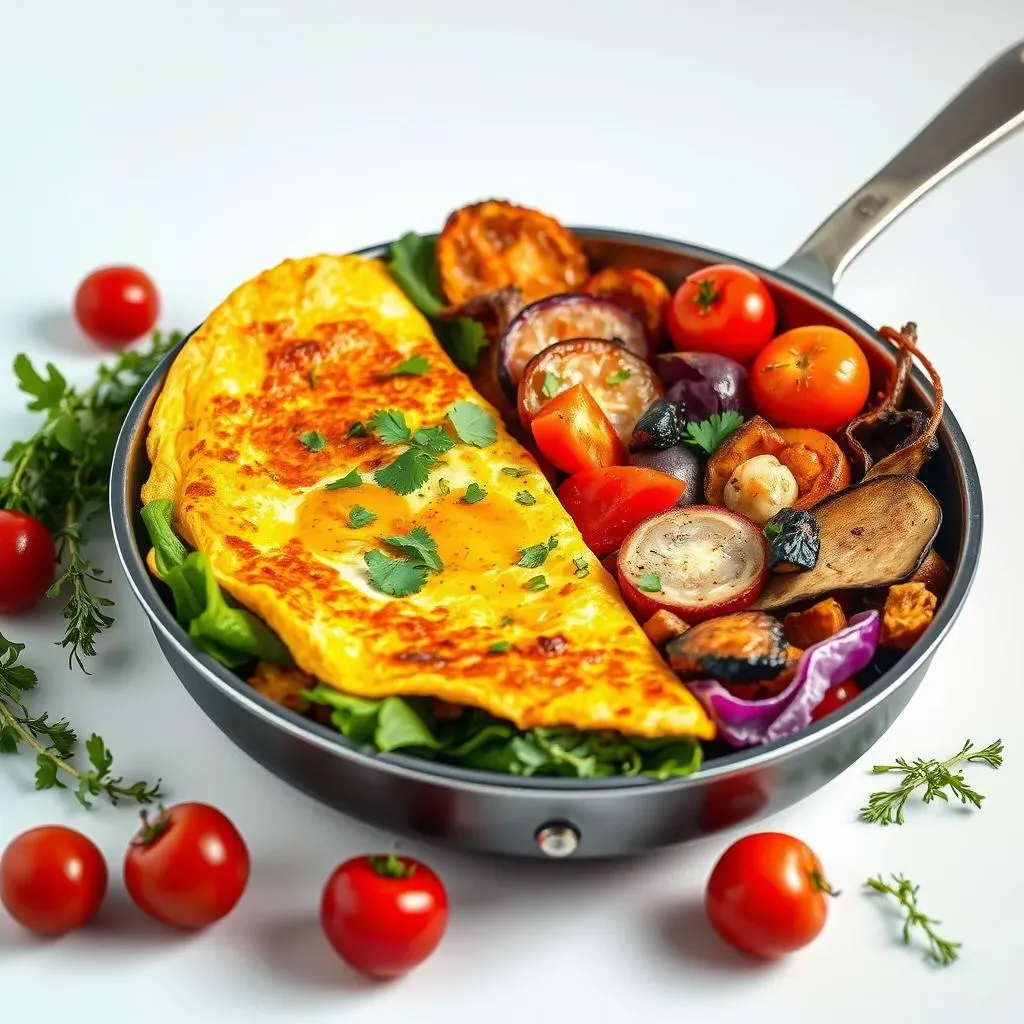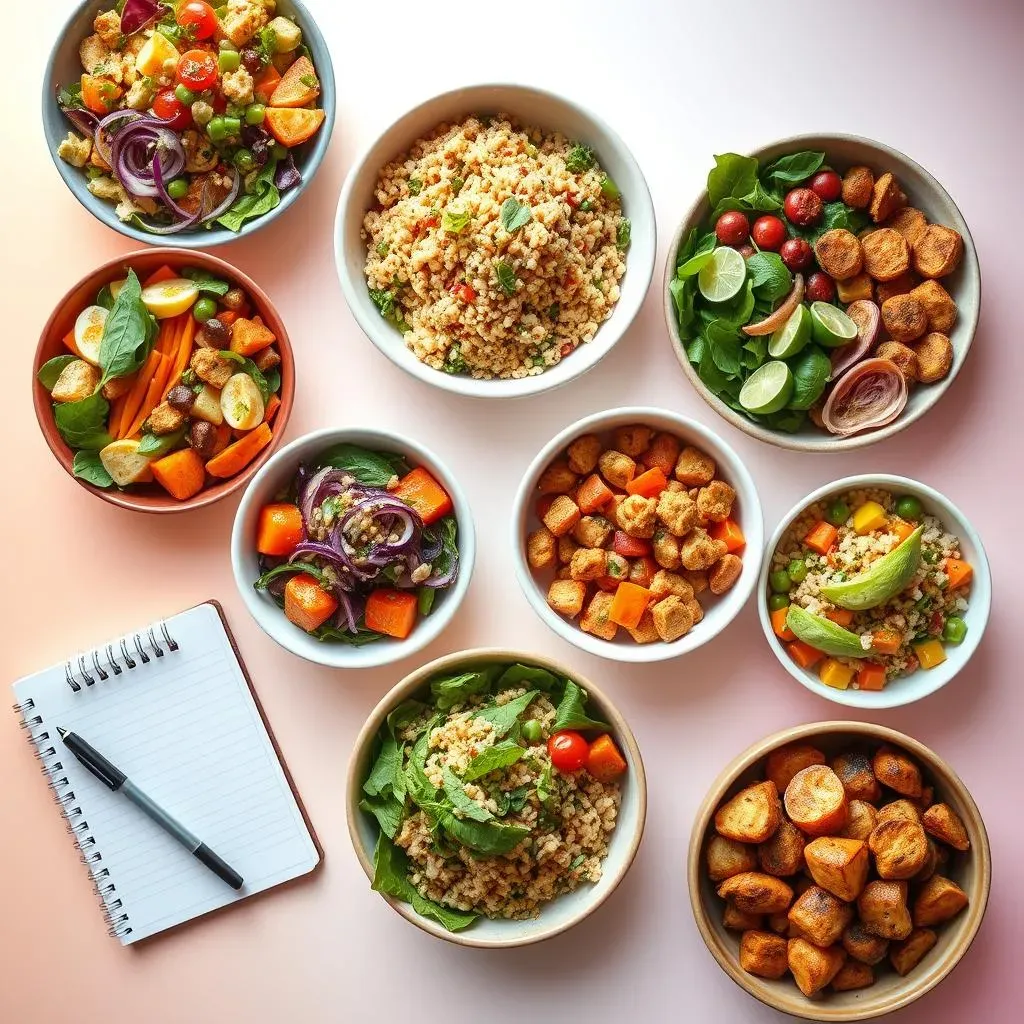Table of Contents
Tired of the same old lunch routine? Wish you could eat healthier but lack the time? Then get ready to discover a world of flavor and convenience with our amazing collection of vegetarian meal prep ideas under 500 calories! This article is your ultimate guide to creating delicious, nutritious, and budget-friendly meals that fit your busy lifestyle. We'll walk you through simple, easy-to-follow recipes, packed with protein and veggies, all while keeping those calorie counts in check. Forget expensive takeout or boring salads – we're talking flavorful bowls, satisfying pasta dishes, and creative lunch ideas that will leave you feeling energized and satisfied. Whether you're a seasoned meal-prepper or a complete beginner, "Vegetarian meal prep ideas under 500 calories" is your key to unlocking a healthier, happier you. Let's dive in and transform your weeknight dinners and weekday lunches!
Easy Vegetarian Meal Prep Ideas Under 500 Calories

Easy Vegetarian Meal Prep Ideas Under 500 Calories
Quick & Easy Quinoa Bowls
Let's start with a classic: quinoa bowls! They're incredibly versatile and perfect for meal prepping. Cook a big batch of quinoa at the beginning of the week – it’s a complete protein, so you’re getting all the essential amino acids. Then, portion it into containers. Throughout the week, you can simply add different toppings to create a variety of flavourful meals.
Think roasted vegetables (sweet potatoes, broccoli, peppers are all great choices!), chickpeas for extra protein, a sprinkle of your favourite nuts or seeds, and a simple vinaigrette. You can even add some leftover grilled tofu or tempeh for a heartier meal. The possibilities are endless!
Ingredient | Calories (approx. per serving) |
|---|---|
1/2 cup cooked quinoa | 110 |
1/2 cup roasted vegetables | 50 |
1/4 cup chickpeas | 80 |
1 tbsp nuts/seeds | 40 |
1 tbsp vinaigrette | 40 |
Total | 320 |
Lentil Soup Powerhouse
Lentil soup is another fantastic option for easy vegetarian meal prep. It's packed with protein and fiber, keeping you full and satisfied. Plus, it's super easy to make a large batch and store it in the fridge for the week. The best part? You can customize it to your liking!
Add different vegetables like carrots, celery, and onions for extra nutrients and flavor. A splash of lemon juice at the end brightens up the soup beautifully. For a spicier kick, add a pinch of red pepper flakes or a dash of your favorite hot sauce. Serve with a side of whole-grain bread for a complete and satisfying meal.
- Brown or green lentils are excellent choices for hearty soup.
- Use vegetable broth for a richer, more flavorful soup.
- Add herbs and spices to boost the flavor profile.
- Consider adding a dollop of plain yogurt or a sprinkle of fresh herbs before serving.
Pasta Perfection Under 500 Calories
Who doesn't love pasta? It's a staple in many diets, and it can easily be incorporated into a healthy meal prep plan. The key is choosing the right pasta and toppings. Opt for whole-wheat pasta for added fiber and nutrients. Avoid creamy sauces that are high in calories and fat. Instead, focus on lighter sauces like pesto, marinara, or a simple lemon-garlic sauce.
Add plenty of vegetables to your pasta dishes to boost the nutritional value and keep the calorie count down. Roasted vegetables, spinach, mushrooms, and zucchini all work well. You can also add beans or lentils for extra protein. Remember to measure your portions carefully to stay within the 500-calorie limit.
Quick & Healthy Vegetarian Recipes Under 500 Calories

Quick & Healthy Vegetarian Recipes Under 500 Calories
Speedy Veggie-Packed Omelets
Omelets are your secret weapon for quick and healthy vegetarian meals under 500 calories. They’re packed with protein, customizable to your taste, and ready in minutes. Whip up a batch of omelets on Sunday, and you’ve got grab-and-go breakfasts or lunches sorted for the week! Experiment with different veggies – spinach, mushrooms, bell peppers, onions – whatever you have on hand. A sprinkle of cheese adds extra flavor (but watch those calories!), or go for a healthier alternative like nutritional yeast for a cheesy flavor without the extra fat.
Remember, pre-chopped veggies are your friend! Save time by buying pre-chopped vegetables, or chop a large batch at the start of the week to speed up your omelet-making process. For a complete meal, pair your omelet with a side of whole-wheat toast or a small portion of fruit.
Ingredient | Calories (approx. per serving) |
|---|---|
2 eggs | 140 |
1/2 cup chopped vegetables | 25 |
1 tbsp cheese (optional) | 20 |
1 slice whole-wheat toast | 70 |
Total | 255 |
One-Pan Roasted Vegetable and Halloumi Bowls
This recipe is all about simplicity and flavor. Toss your favorite vegetables (broccoli, carrots, zucchini, bell peppers work well) with olive oil, salt, and pepper. Roast them until tender and slightly caramelized. While the veggies roast, cook some halloumi cheese (a fantastic source of vegetarian protein) until golden brown. Assemble your bowls by layering the roasted vegetables over a bed of quinoa or couscous (both are great choices for quick cooking). Top with the halloumi and a sprinkle of fresh herbs. It’s a visually appealing and incredibly satisfying meal, perfect for a quick and healthy lunch or dinner.
This recipe is super adaptable. Feel free to swap out vegetables based on what you have on hand or what's in season. Experiment with different herbs and spices to find your perfect flavor combination. A squeeze of lemon juice adds a bright, refreshing touch.
- Preheating your oven saves time and ensures even cooking.
- Use a baking sheet with sides to prevent spills.
- Don't overcrowd the pan; vegetables need space to roast properly.
- Add a sprinkle of feta cheese for extra flavor (optional).
Vegetarian Meal Prep: Tips & Tricks for Success Under 500 Calories

Vegetarian Meal Prep: Tips & Tricks for Success Under 500 Calories
Planning Your Vegetarian Meal Prep Success
So, you're ready to dive into the world of vegetarian meal prepping, aiming for those delicious under-500-calorie meals? Fantastic! The first step to success is planning. Before you even think about chopping veggies, take some time to brainstorm your menu. Look for recipes that genuinely excite you – if you’re not stoked about the food, you’re less likely to stick to your meal plan. Consider your weekly schedule – what days are busiest? What meals are easiest to prep ahead? Having a solid plan prevents last-minute takeout temptations.
Next, create a shopping list based on your chosen recipes. This prevents impulse purchases of unhealthy snacks. Buy in bulk when possible (especially for staples like quinoa or lentils) to save money. Remember to check your pantry and fridge before you shop to avoid buying duplicates. A well-organized shopping list ensures you have all the ingredients you need for a successful meal prep session. And don't forget to check for sales and coupons to save some extra cash!
Planning Stage | Action Items |
|---|---|
Menu Selection | Choose 5-7 recipes you enjoy and that fit your calorie goals. |
Shopping List | Create a detailed list based on your chosen recipes, checking pantry first. |
Prep Time | Allocate specific time slots for shopping and meal prepping. |
Mastering the Art of Vegetarian Meal Prep: Portion Control & Storage
Now that you've planned your meals, it's time to get cooking! Remember, portion control is key to staying within your 500-calorie target. Use measuring cups and a food scale to accurately measure ingredients. Many recipes online provide calorie counts per serving, but it's always a good idea to double-check using a nutrition calculator, just to be sure. Consider using smaller plates and bowls to help with visual portion control – it can make a difference!
Once your meals are cooked, proper storage is crucial to maintain freshness and prevent food waste. Invest in good quality airtight containers. Label each container with the contents and date to easily track what you have and when it was made. Try to use a variety of container sizes to match your portion sizes. And remember, leftovers are your friends! Plan to use leftovers creatively, perhaps incorporating them into a different meal later in the week. This minimizes food waste and saves you time.
- Use reusable containers to reduce your environmental impact.
- Label containers clearly with contents and date.
- Store leftovers properly to maintain freshness.
- Consider freezing portions for future meals.